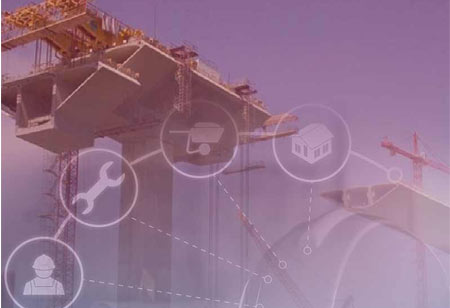Thank you for Subscribing to Construction Business Review Weekly Brief
Specials
- MEP APAC
- Apartment and Condominium Contractors Canada
- Decking Canada
- Architectural Glass Europe
- Construction Saudi Arabia
- German Apartment and Condominium Contractors
- Construction Law APAC
- Outdoor Construction
- Foundation Construction Canada
- MEP Canada
- Kitchen and Bath
- Cold Storage Construction APAC
- Precast Concrete Europe
- Construction Staffing Europe
- Pre-Construction Services
- Flooring System APAC
- Scaffolding Canada
- Swimming Pool Construction Canada
- Construction Management Canada
- Cold Storage Construction Canada
- Flooring Systems Europe
- Residential Construction
- Concrete Canada
- Construction Cladding Europe
- Construction Cladding APAC
- Concretes, Aggregates and Construction Materials APAC
- Concretes, Aggregates and Construction Materials Europe
- Commercial Contractors Europe
- Commercial Contractors APAC
- Dummy
- Construction Insulation, Coating and Waterproofing
- Construction Management APAC
- Landscaping Canada
- Construction Coating Europe
- Construction Tech Startups Europe
- Insulation Services Europe
- Mechanical Contractor Canada
- Mould Remediation and Testing Europe
- Swimming Pool Construction APAC
- Building Sealing Solutions Europe
- Construction Engineering Services
- Mechanical Electrical and Plumbing
- Roofing Systems Europe
- Architectural Glass APAC
- Startups APAC
- Construction Forensic and Owners Representative
- Flooring System
- Waterproofing APAC
- Wall Systems
- Safety and Compliance Europe
- Construction Bidding and Auctions
- Modular and Prefab Construction
- Architectural Glass
- Construction MENA
- Construction Demolition and Recycling Europe
- Modular Construction Europe
- Construction Interiors
- Steel Building APAC
- HVAC
- Doors and windows
- Construction Latam
- Building Information Modeling APAC
- Sustainable Construction APAC
- Building Restoration and Maintenance
- Commercial Contractors
- Specialty Construction
- Construction Engineering Canada
- Construction Engineering MENA
- Modular Construction Canada
- Modular Construction APAC
- Roofing and Siding Systems
- Workforce Management and Staffing
- Roofing Systems APAC
- Construction Consulting
- Steel Building Europe
- Construction Demolition and Recycling APAC
- Safety and Compliance APAC
- Concretes, Aggregates and Construction Materials
- Construction Cladding
Training the Next Generation of MEP Engineers in APAC
The Asia-Pacific construction boom is causing a skills gap in MEP engineering due to technological advancements and sustainability priorities, necessitating a comprehensive approach.

By
Construction Business Review | Friday, April 19, 2024
Stay ahead of the industry with exclusive feature stories on the top companies, expert insights and the latest news delivered straight to your inbox. Subscribe today.
The Asia-Pacific construction boom is causing a skills gap in MEP engineering due to technological advancements and sustainability priorities, necessitating a comprehensive approach.
FREMONT, CA: The Asia-Pacific (APAC) region is undergoing a substantial construction surge driven by rapid urbanization and economic expansion. This heightened activity brings a notable challenge: an increasingly pronounced skills gap within Mechanical, Electrical, and Plumbing (MEP) engineering.
Various factors influence the widening skills gap in the engineering sector. Rapid technological advancements such as Building Information Modeling (BIM), digital twins, and automation are reshaping industry practices. This necessitates a shift in traditional engineering skillsets to incorporate these innovations effectively. Secondly, there is a notable shift in industry priorities towards sustainability, energy efficiency, and occupant well-being, demanding MEP engineers to possess expertise in these domains for designing and implementing high-performance buildings. Additionally, the aging workforce presents a challenge as a significant portion of the current MEP workforce approaches retirement age, leading to a potential knowledge transfer gap. The ramifications of this skills gap include project delays, cost overruns, and suboptimal building performance in terms of energy efficiency and occupant comfort. Addressing these challenges requires proactive measures to upskill existing talent and attract new professionals with the necessary expertise.
To address this disparity, a comprehensive approach is imperative:
Firstly, an overhaul of engineering education is paramount. Universities and engineering institutions must modernize curricula to integrate cutting-edge technologies and emerging trends. This entails incorporating courses on Building Information Modeling (BIM), computational design, sustainable design principles, and data analytics.
Secondly, fostering collaboration between academia and industry is essential. Initiatives like internship programs, guest lectures delivered by industry experts, and research projects sponsored by industry players offer students invaluable real-world exposure.





